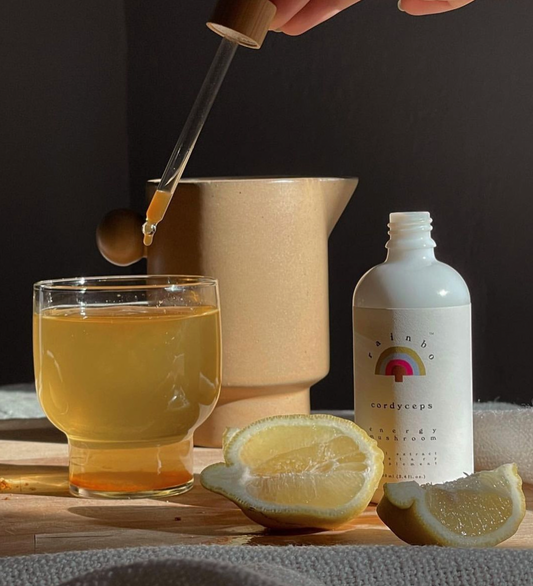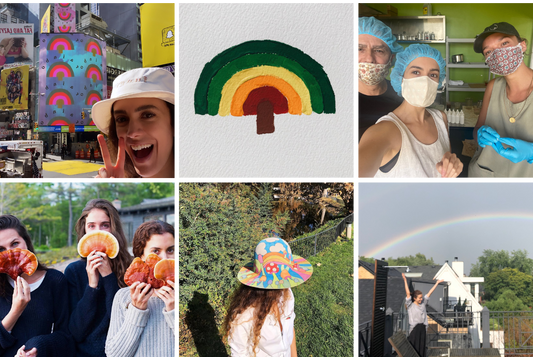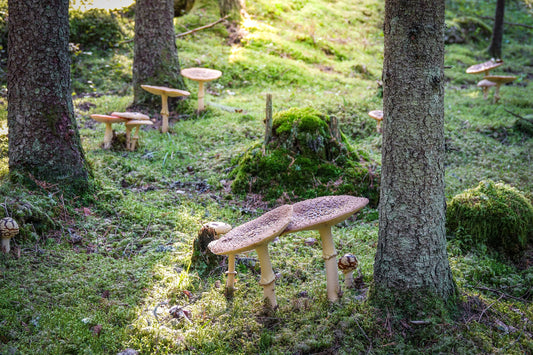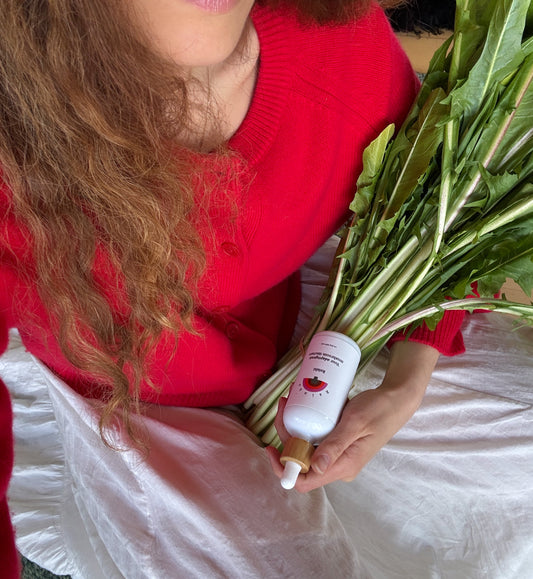Traditional foods of the Canadian Indigenous
Image source https://native-land.ca/
“It is common knowledge that the collective wisdom of resource use in natural environments known to Indigenous People is disappearing in the face of "modernization'' and "technological development". Young people are no longer systematically taught by their elders to survive using only the natural environment. Hence, valuable information on these resources is being passed to fewer and fewer people, and gradually being lost from indigenous societies, as well as from collective human knowledge.” - Traditional Plant Foods of Canadian Indigenous Peoples by Harriet V. Kuhnlein, Nancy J Turner
Indigenous foods
Many of the foods we consume every day have been traditional foods for much longer than we have been on the lands we now inhabit. What do we mean by traditional foods? These are foods from the natural environment used in traditional Indigenous cultures before contact was made with Europeans.
Indigenous Peoples have always developed a successful ecological form of community nourishment based on the natural resources available in the area. Because of this, Indigenous Peoples are recognized as having the ultimate knowledge of the successful use of plants, animals and fungi as resources.
Reprehensibly, today a lot of that Indigenous knowledge has been lost due to the colonization of Canada and the cultural genocide that occurred through residential schools when the bonds between elders and their grandchildren were broken.
However, from the traditional knowledge that has been conserved we come to realize that many of the foods we eat arrived on our plates from the original sharing (and stealing) of knowledge on how to live off the land. This included essential information both on wild harvesting and cultivation. In fact, early agriculture looked a lot more like permaculture - a holistic approach to farming that is modelled from the natural regeneration that occurs in wild ecosystems. Recreating these systems on the farm, permaculture creates a self-maintaining system and lifestyle that works with the elements of nature and not against them. For example, for many millennia Indigenous groups throughout the Americas planted three crops as companions to one another - maize, beans, and squash. These crops mutually benefited each other with the maize providing tall stalks for the beans to climb, the beans providing nitrogen for fertile soil, and the sprawling squash maintaining a microclimate around the plants. The Iroquois named this planting combination the “Three Sisters”.

So what did the traditional diet of Canadian Indigenous look like?
According to Traditional Plant Foods of Canadian Indigenous Peoples by Harriet V. Kuhnlein, Nancy J Turner the agricultural groups in South-Eastern Canada (Huron, Ojibwa, Iroquois) cultivated the three sisters crops, and harvested maple sap and wild rice. West coast peoples ate a diversity of berries, roots and green plant foods to supplement diets rich in fish and game. While the Northern peoples supplemented their animal and fish foods with seaweeds, berries and tundra greens.
What about fungi?
From what we were able to source in the literature, a surprisingly small number of mushroom and fungi species were featured in traditional Indigenous diets compared to the large variety and general abundance of fungi found naturally throughout North America. This could be due to the difficulty in identifying toxic from non-toxic fungi in certain areas, although it could also be due to storytelling. In one account, it's said that long ago the medicine elders fostered a strong taboo against eating mushrooms for the Inupiat group of Alaskan Natives. In some coastal languages, such as Haida, there doesn’t appear to be a name for “mushroom”, despite the availability of edible mushrooms on the coast.
That isn’t to say that none of the Canadian Indigenous groups ate mushrooms as traditional food. The Iroquois, Chipewyan, Interior Salish, and some Chilcotin people ate various species of fungi, commonly boiled or cooked in stews. The polypore mushrooms that grow on trees were used medicinally. The Iroquois classified the different polypores species according to the trees they grow on. An especially medicinal polypore fungus that has long been prized and used by the First Nations people of Canada is the Chaga fungus of birch trees.
First Nations use of Chaga
The Cree call it Poashkan or Wiskakecakomikih.
Chipewyan and Ojibway Nations call it Cha’a’ihtthi.
The Denesuliné peoples of Northern Saskatchewan call it ETSEN DEK.
The Gitksan of British Columbia call it DIDIHUXW or DI DIYHUH. Also known by Gitksan elders as MLL’HLW and TLLUXW.
The Wet’suwet’en of Northwestern British Columbia call it DIDIC’AH CI’ISTS’O and TL’EYHTSE.
The different traditions involving fungi throughout Canada converge together in the shared credence that chaga is a healing medicine. Whether it is burned to alleviate joint pain or simmered for hours to make an antiviral tea or held near to the skin as it burns to stimulate the body’s energy meridians, chaga holds great medicinal value in these cultures. The Dene of Saskatchewan even use burning chaga in a ritual for divination - two lines of powdered chaga are ignited and the line that burns first indicates the event that will occur first.
According to Cree legend, the mythological character Wisakecak threw the scab from one of his wounds against a birch tree. To this day Chaga remains on the trees to support humankind.
<3
Wordbank
Permaculture- Ecological researcher and writer, Bill Mollison and David Holmgren coined the term in 1978. They combined the words permanent and agriculture to create permaculture as a system of ecological farming. It was later expanded to stand for permanent and culture to emphasize the social needs of people and their housing as integral to a sustainable system as well.
As defined in Traditional Plant Foods of Canadian Indigenous Peoples by Harriet V. Kuhnlein, Nancy J Turner
Indigenous people- For the purposes of this work, the term "Indigenous People" refers to a cultural group in an ecological area that developed a successful subsistence base from the natural resources available in that area. Indigenous People in a particular environment are recognized as the definitive sources of knowledge of successful uses of plant and animal resources, particularly within their culture. The term "Indigenous Peoples" refers to the plural—that is, more than one cultural group considered simultaneously.
Traditional foods / Indigenous foods- Technically, in the Western Hemisphere, this term implies plant foods from the natural environment used in traditional indigenous cultures and food use patterns before contact with Anglo-Europeans. However included are some species that have been introduced from other regions that are either known to have been used by Indigenous People, or which contain edible parts.
As defined from https://indigenousfoundations.arts.ubc.ca/terminology/
First Nations- “First Nation” is a term used to describe Indigenous peoples of Canada who are ethnically neither Métis nor Inuit.
Indigenous -Indigenous is a term used to encompass a variety of Aboriginal groups. It is most frequently used in an international, transnational, or global context.
Native- is a general term that refers to a person or thing that has originated from a particular place. The term “native” does not denote a specific Aboriginal ethnicity (such as First Nation, Métis, or Inuit).








